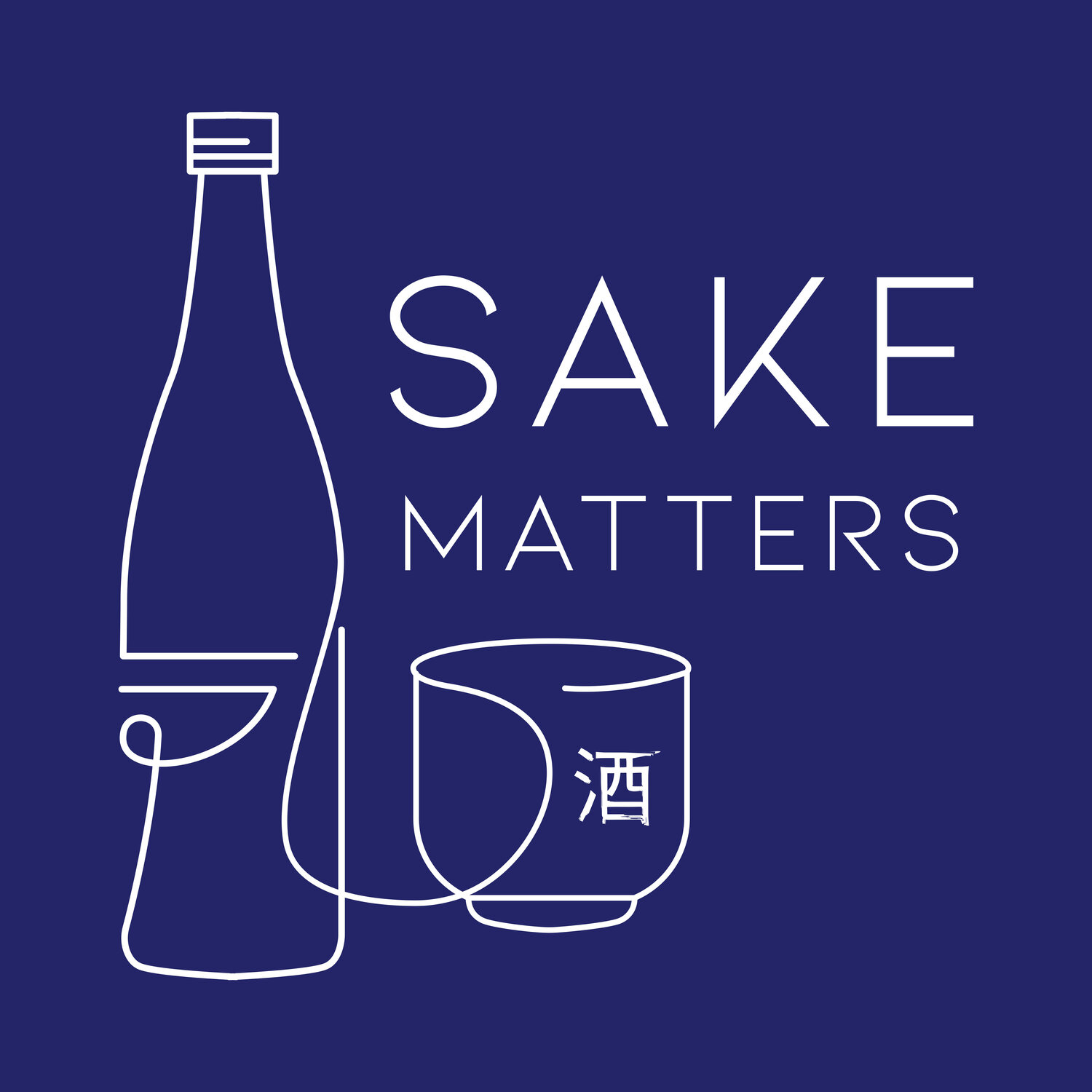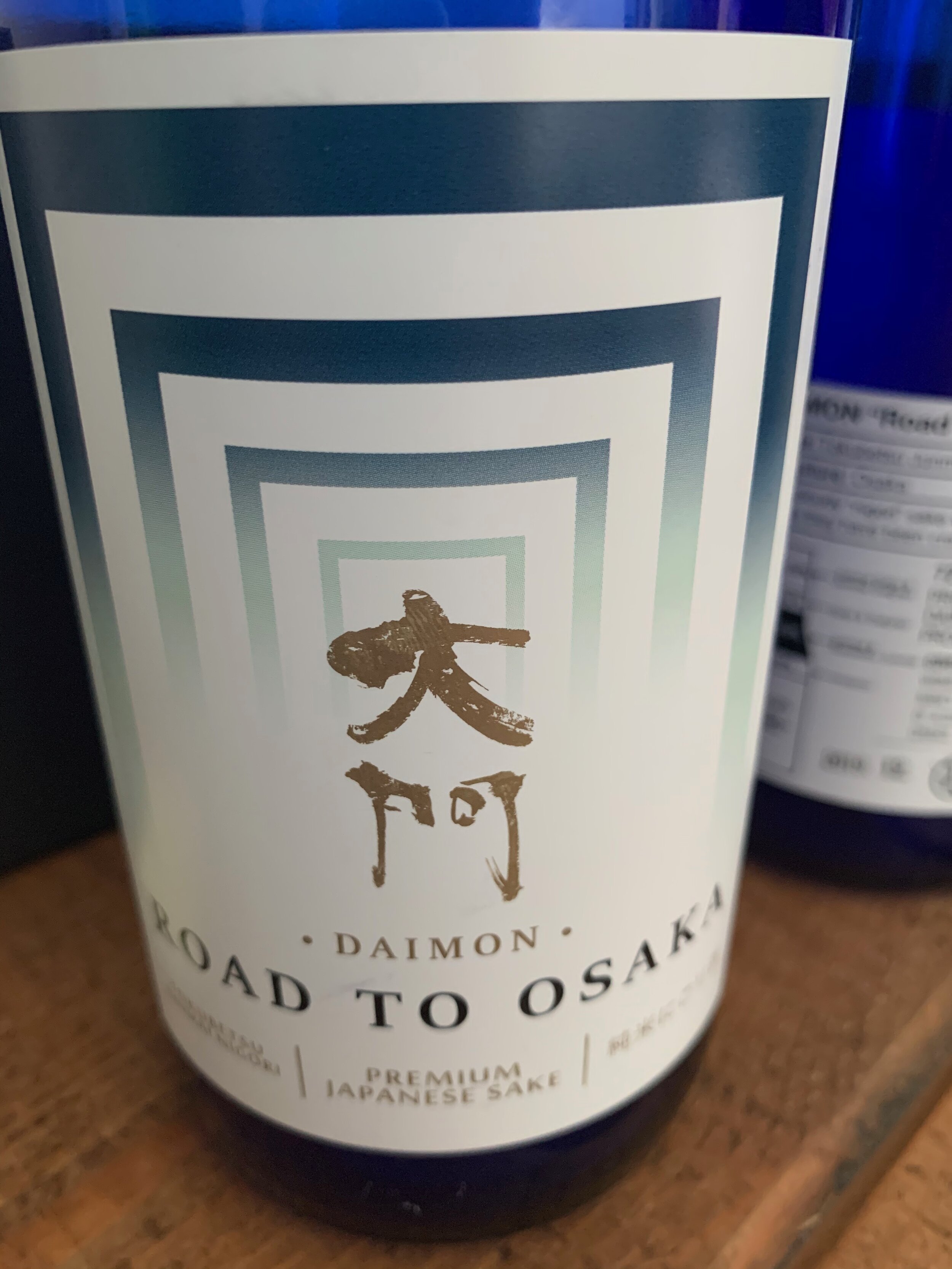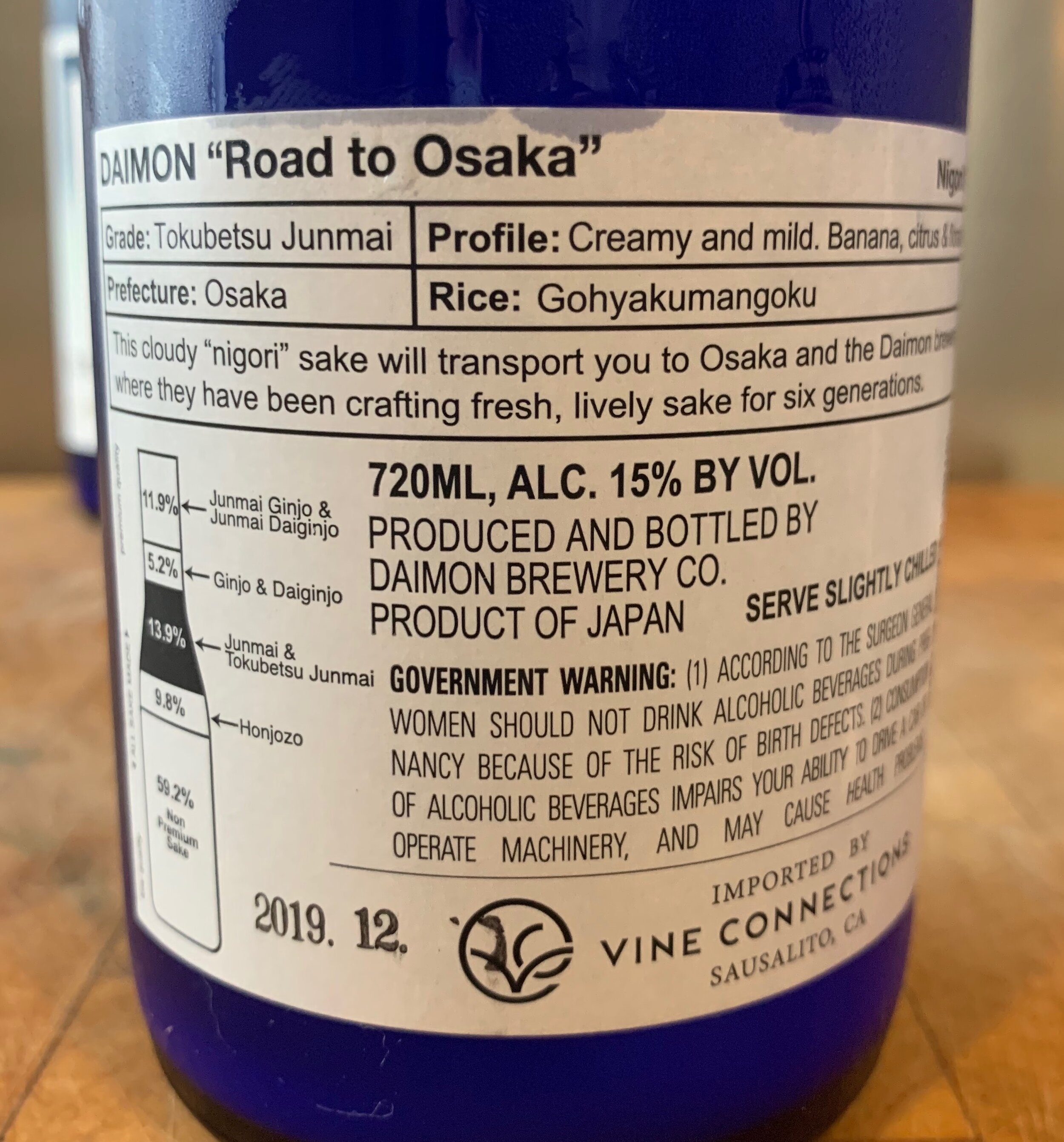KEEP YOUR EYES ON THE ROAD
Welcome to my first official Sake review. Yōkoso!
And, a quick search online makes me believe this may well be the first Asia review of Road To Osaka, recently created by Daimon Brewery. Either way, I’m claiming it as a ‘first’, so I hope you enjoy reading it, although probably not as much as I enjoyed researching and tasting for it.
One of my smartest moves of 2020 so far might have been stockpiling a few bottles of Road To Osaka. It’s delicious. I first became aware of the brewery’s only Nigori on my second visit to Daimon Shuzo in March, just as we were all starting to add ‘distancing’ and ‘sanitizer’ into our most frequently used daily vocabularies.
At that stage, all I saw of it was just a pallet of labelled blue bottles, scheduled for imminent departure to the US. Here in Hong Kong I have been able to secure it from my pals at Koji Sake, in collaboration it seems with Monica and the team at Vine Connections, California. Thanks guys, keep it coming.
Road To Osaka sits in the top tranche of the brewery’s Sake offering – the eponymous Daimon Series – crafted with 200 years of brewing experience and although not Ginjo, like all Daimon Sakes it is made using small batch (10kg), hands on production processes and made at Ginjo-low temperatures to extend the fermentation time.
Sixth generation brewery owner, Yasutaka Daimon, told me Road To Osaka had been developed specifically for the international markets, taking into consideration the palate preferences and, generally, his own significant knowledge and experience as a seasoned traveller outside of Japan. Progressive thinking from an historic Shuzo.
Only one Sake in the entire range isn’t Junmai (a delicious Tokubetsu Honjozo). I’d like to be able to say why, but amidst all the answers I was trying to secure during my visit, I didn’t ask. Next time.
But I do have a theory. Quite possibly, it’s because Yasutaka-san is passionate about his home region, Kansai, and likes to reflect the tradition in his product, delivering umami rich Sake from the soft waters flowing forth from the ancestral spring up in the Ikoma mountains just behind the brewery. As a general rule, I find Daimon Sakes quite punchy and flavorsome, yet somehow you can still tell they have been delicately crafted. There’s a richness running through them.
And this leads me on to what is a personal observation but hopefully one with some merit, that Kansai Sake needs to be built as a food Sake. Osaka is the street food capital of Japan, it has a vibrant hospitality scene and locals work hard and eat hard. Kansai Sakes need to live in amongst this spirited lifestyle too.
Manic Osaka at night
And this Junmai fits the bill. It is special, in quite a few ways. Not least literally, claiming its Tokubetsu status from the polishing rate of 60% but also special as it is made with Gohyakumangoku rice whereas the majority of Daimon Sake is made with Yamada Nishiki. And, of course, it’s cloudy – Nigori.
So in the glass it has a wonderful hazy appearance, an almost ghostly white suspension of the rice particles with flashes of brightness.
On the nose the aromas are delicate, there’s definitely some citrus zest or peel, grape skin and a hint of something sweet. Now I know you can’t smell ‘sweet’ so I’m suggesting here maybe powdered sugar, like you might find blowing about in a box of Turkish delight. But not rice, yet, which threw me a little, but also suggested some sophistication to come.
And come it did, the flavors of cream cheese and general lactic notes come through on tasting, even ending with some natural yoghurt and there’s some dryness here in the form of bran, cooked brown rice and maybe the skin of almonds. As a Nigori, I’m expecting a creaminess and some sweetness but this is more complex, and all bathed in a viscous smoothly textured Sake.
Not strictly “salad”…
I paired it with a Sake-kasu marinated trout fillet salad. I say ‘salad’ but wonder if duck fat fried potatoes have any place in such a thing, but it stood up well as a match regardless – the earthiness of the kasu seemed to be the key. Too late in the day I realise I should have perhaps gone for something spicier as a food match, or fried, but this gives an excuse to have another bash next week.
For me Nigori-zake isn’t a category I head to often, and it’s not usual to chug through a whole bottle in one sitting but this is Daimon’s. It’s up another level, not claggy or hard work to drink. It respects the characteristics of Nigori in terms of mouthfeel and lactic, whilst also demonstrating the class, dedication and attention to detail that the Shuzo is known for.
So here ends my first review. How was it? I reassured myself a few times as I wrote this that Sake tasting is very personal and subjective. It can be influenced by mood, circumstances and a whole host of other factors. I read a few articles on Daimon Shuzo recently in preparation for this and heard their Sakes described anywhere on a scale between “biblical” and “feminine”, so at least my views fall within those parameters. But either way if you like it, you like it, and that’s all that really matters at the end of the day.
And on this occasion, boy did I like it.
FOOTNOTE:
Since my visit to Osaka, I have subsequently learned that in the USA bottles are available at www.vineconnections.com / www.drinkpourtal.com
QUICK GLOSSARY:
Yōkoso (ようこそ): Japanese for ‘Welcome’
Nigori 濁り: “Cloudy” or “milky” Sake that has some of the original rice solids from fermentation remaining in the liquid. Body can vary from simple opaque through to quite thick and porridge-like. Brewers achieve this by running the Sake through a coarser filter or by adding the rice back in after filtration. Note that Japanese law stipulates that all true Sake must be filtered
Shuzo: Sake brewery. Often added to the company name e.g. Morikawa Shuzo
Ginjo 吟醸: Sake made from rice at a polishing ratio below 60%
Junmai 純米: Sake made using only rice, water, yeast and koji – no added alcohol (純: pure; 米: rice)
Tokubetsu 特別: Simply means “special” and identifies that a special production process was applied to a Junmai or Honjozo category Sake. More often than not it designates that a lower rice polishing rate than required took place
Honjozo 本醸造: Sake made from rice at a polishing ratio below 70%
Sake-kasu: The residual rice solids (like “lees” in wine) from when the Sake is separated from the main fermentation through pressing
LINKS:
Daimon Brewery
〒 576 - 0031 Osaka Prefecture, Katano City, Mori-Minami 3-12-1
072-891-0353
www.daimonbrewery.com
info@daimonbrewery.com
@daimonbrewery
Koji Sake
www.koji-sake.com
@koji_sake












